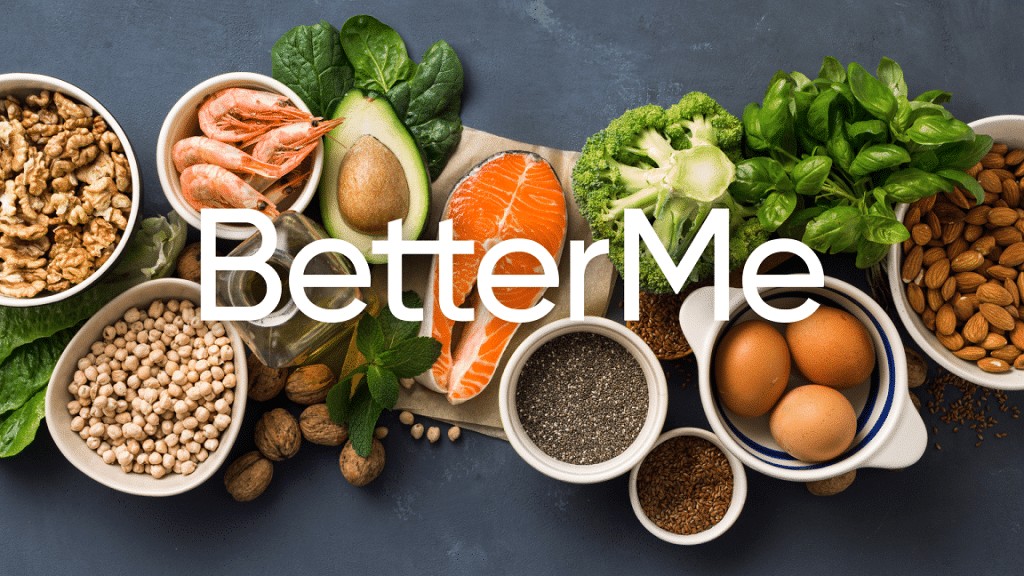You’ve probably heard that eating before bed isn’t a good idea when you’re trying to lose weight. Or it would be best if you ate less before a workout and more after your workout. That’s nutrient timing.
Get your personalized
meal plan!
It’s a strategic nutrition system where you eat at certain times to achieve benefits such as muscle growth, fat loss, and improved performance. Unfortunately, it’s not as black and white. Follow us into the discussion as we look deeper into the topic.
What Is Nutrient Timing?
Nutrient timing is when you eat specific foods in specific amounts at specific times to achieve maximum results. For decades, professional bodybuilders and athletes have used the concept of nutrient timing to aid with bodybuilding, fat loss, and improved performance.
In the early 2000s, precisely 2004, Dr. John Ivy, one of the world’s leading researchers in “carbohydrate timing,” and Dr. Robert Portman published a book called Nutrient Timing: The Future of Sports Nutrition. The book lay a foundation for many nutritional programs that promoted the idea of nutrient timing and how it was vital to losing fat, gaining muscle, and improving performance.
For many years, researchers continued to study the nutrient timing system, trying to prove that it works and is effective. Unfortunately, studies are still inconclusive as there are many variants on this concept (7).
Several studies conclude that even though nutrient timing may have benefits, there are limitations:
- Short-term blood markers only indicate short-term benefits.
- The research was mostly conducted on soft endpoints such as protein synthesis, glycogen replenishment, or nitrogen balance. These didn’t conclude if the effects led to changes in body composition or performance.
- It has an athletic bias as the studies focus on athletes who follow intensive exercises such as endurance training, strength training, and muscle building.
Scientific evidence shows that strategic placement of food could possibly help one perform better, build muscle, grow and recover faster, leading to a more robust and healthier body. However, more research is to be done in different circumstances.
Intense sweat sessions, working weight loss tips, lip-smacking recipes come in one package with the BetterMe app. And all of it is at your fingertips, start transforming your life now!
What Are The Distinct Phases Of Nutrient Timing?
There are three nutrient timing phases:
- Energy Phase
- Anabolic Phase
- Growth Phase
The Energy Phase
The first phase of nutrient timing occurs during or before your workout, where you intake carbohydrates and proteins to fuel the body. Energy will then be released by your muscles and used to sustain and support your exercises. The phase aims to increase nutrient delivery to the muscles to build glycogen and prevent protein loss.
Muscle glycogen is the primary fuel for your body during high intensity exercise. You have to keep your glycogen stores high or risk muscle fatigue and reduced force production, leading to low body mass.
Nutrient timing comes in when you feed primarily on carbs and protein to prevent depletion of muscle glycogen stores, extending endurance. The food will also help you maintain healthy blood glucose levels, which delays fatigue. Moreover, it includes feeding on specific amino acids and vitamins that help with muscular endurance and support the catabolic phase.
Because the energy phase involves a decrease of glycogen stores through aerobic and anaerobic exercises, plus the catabolic responses from several hormonal and physiological changes in the body, protein intake with carbohydrate supplementation is crucial.
Not only do the carbohydrates provide a source of energy to replace glycogen stores, adding protein helps muscle recovery and building post-exercise (6).
Read More: Cortisol Belly Fat: Explaining How ‘The Stress Hormone’ Is Expanding Your Waistline
The Anabolic Phase
The next phase is the 45-minute window of opportunity, where the body tries to replenish all its lost glycogen from the training. It immediately follows the workout, which means your body is hungry for nutrients that replace lost energy and initiate damaged muscle protein repair.
Your body will be sensitive to insulin since the phase is now anabolic, and it would be best to feed your body the proper nutrients, including protein and carbs, to improve muscle endurance and strength. Many believe that your body absorbs more nutrients during this window of opportunity and that your cell membranes are more permeable to glucose.
That’s advantageous as your body quickly restores its glycogen stores and provides the necessary glucose needed to initiate muscle tissue repair, synthesis, and recovery. The anabolic phase requires high carbs, proteins, antioxidants, and amino acids to speed up muscle recovery.
The Growth Phase
The last phase lasts the remainder of the day or until your next workout (approximately an 18 to 20-hour gap). It’s where your body slowly recovers and grows muscle fibers by increasing the number of contractile proteins in your muscles. It also aids in replenishing glycogen that was depleted from the energy phase.
The phase aims to maintain optimal muscle growth by preventing insulin resistance, so your muscle enzymes keep building the proteins until you achieve muscle gain. It requires high protein intake to increase strength and aid in protein synthesis. Nonetheless, a healthy balanced diet should also apply.
The Anabolic Window: Fact Or Fiction?
The anabolic window of opportunity is the timeframe immediately after your workout (about 30-45 minutes) where your body is hungry for nutrients, primarily glucose. The glucose is used to replenish your glycogen stores and help with muscle recovery in the long run.
It’s called a window of opportunity because, in theory, when your body is as hungry as this moment, your body quickly absorbs nutrients leading to faster protein synthesis and muscle recovery. Theoretically, outcomes such as muscle gain and fat loss are more rapid if you optimize this anabolic phase.
However, this isn’t entirely true, and the anabolic window of opportunity is just but a myth. Here’s why:
Insulin Sensitivity
After the intense exercise, your body will be sensitive to insulin so that your cells can quickly absorb glucose to replenish your glycogen stores. However, after a short time, this effect wears off and muscle glycogen recovery slows down rapidly along with the repair and synthesis of new muscle. The time it takes for this period of increased insulin sensitivity to end depends on multiple factors, and may even last 1-2 days after intense long-duration exercise.. In addition to this temporary effect, regular exercise can increase insulin sensitivity over the long term.
Whether you’re looking to simply pep up your fitness routine, jazz up your diet with mouth-watering low-calorie recipes or want to get your act together and significantly drop that number on your scale – BetterMe app has got you covered! Improve your body and revamp your life with us!
Carb Replenishment
Taking in carbohydrates after your exercise will ensure glycogen stored in the muscles and liver is replenished faster. However, the anabolic window period would only be helpful if you worked out more than once a day.
Athletes who exercise more than once will have enough windows of opportunity to feed the body and replenish their lost energy stores. Moreover, feeding soon after exercise may obstruct the benefits of the practice (2).
Protein Intake
Lastly, while protein is essential for initiating muscle and tissue repair, the benefits of consuming proteins aren’t seen as fast since protein is metabolized slower. Meaning, the benefits of proteins are seen in the growth phase rather than the anabolic window.
Therefore, with protein, the focus should be on your total daily intake, ensuring you include an adequate amount at each mealtime. A nutrient timing plan would be essential to ensure you take in high proteins throughout the day to aid with bodybuilding, composition, and performance.
In summary, the anabolic window of opportunity may seem like an excellent way to build muscle and lose weight/fat; however, it mainly applies to athletes. Those who indulge in high-intensity exercises more than once a day might benefit as the body can seize their window more than once a day.
However, for the rest of us, we can stick to mindful eating where we have a consistent meal plan; the caloric deficit is best for losing weight while calorie surplus for gaining weight.
Read More: 200 Grams Of Protein A Day Meal Plan: Is Going To Such Extremes Worth It?
Nutrient Timing For Weight Loss
Among the possible benefits of nutrient timing is loss of weight. However, it’s not as straightforward. Eating certain foods at specific times of the day won’t compensate for unhealthy and unbalanced meals that lack the nutrients you need, are high in calories, and aren’t controlled.
You have to create a nutrient timing plan that addresses every one of these issues and offers the best solution to weight loss. You should note that there’s no perfect meal plan as other factors such as physical activity levels, types of exercise, and genetics come to play. But, you can follow a few tips to guide you in the right direction.
Tips On Nutrient Timing For Fat Loss
- Aim for a caloric deficit. When you eat fewer calories than you burn, your body will use up fat storage as energy after depleting glycogen in the muscle.
- Schedule your meal times to ensure you eat more in the morning. Studies reveal that eating more food in the morning/ for breakfast boosts your body and works along calorie deficiency lines (4).
- Ensure a good balance of proteins, carbs, and healthy fats in all your meals regardless of time.
- Eat every three to four hours to maintain your blood sugar levels all day.
- Eat carb-rich meals before your workout. Carbohydrates will boost your performance and ensure your body gets enough energy for exercise, especially for high intensity. Lack of carbs will cause muscle loss as the muscles’ protein will then alternative fuel for the body.
Note that nutrient timing for weight loss isn’t the primary goal for this strategic approach to nutrition. You could eat at the correct times and in the right portions but still wouldn’t lose weight. That is why you need to understand that the only way you will lose weight is to be in a caloric deficit and keep doing your exercises to use up your calories.
Nutrient Timing For Bodybuilding
Post-exercise nutrition aims to replenish your glycogen stores, lower your body’s protein breakdown, and increase your protein synthesis. With that, you can also build muscle. However, the road to bodybuilding begins at the first phase of nutrient timing.
From the energy phase, ensure you intake a diet rich in carbohydrates, proteins, and fats to help with muscle contraction energy.
During this catabolic state, breakdown of nutrients, your skeletal muscle blood flow will increase, causing an increase in amino acids and glucose in the blood. Ultimately, having energy available at this time will positively balance the protein muscle and reduce glycogen depletion.
Now that you have prevented your body from losing muscle mass, the subsequent two phases(anabolic and growth muscle) will be all about taking in the right foods that encourage your muscles to grow. In the anabolic phase, you’re taking advantage of your body’s state of depletion to feed on necessary nutrients, mainly carbs, and protein, to help with the recovery and growth of muscle.
Taking these carbs and proteins in the two remaining phases ensures your body repairs muscle tissue and synthesis the protein leading to muscle hypertrophy.
Nutrient Timing Bodybuilding Tips
Try out these tips to achieve muscle gain.
- You can workout without eating anything like early in the morning, but ensure to feed in plenty of protein post-exercise.
- If you choose to eat before training, eat more proteins and carbohydrates to push you through the energy phase.
- Take advantage of your anabolic window to boost hypertrophy. You could eat a simple protein bar.
- Hydrate and rehydrate before, during, and after your exercises to ensure your muscles get the minerals and electrolytes they need.
The key is to maintain a calorie surplus for bodybuilding, so your body has excess energy to build from immediately after your exercise. Moreover, bodybuilding often requires strengthening, or endurance training as both will affect your muscles more, leading to more hypertrophy.
The Bottom Line
Nutrient timing is a tremendous strategic feeding plan that can aid with fat loss, muscle gain, and improved performance. However, it primarily works with athletes as they have high nutritional needs and exercise often.
For an average person, nutrient timing works best when it’s applied along with a nutritious diet and regular exercise. Remember when you eat is equally important as what you eat; food quality and consistency are essential.
DISCLAIMER:
This article is intended for general informational purposes only and does not address individual circumstances. It is not a substitute for professional advice or help and should not be relied on to make decisions of any kind. Any action you take upon the information presented in this article is strictly at your own risk and responsibility!
SOURCES:
- Determinants of post-exercise glycogen synthesis during short-term recovery (2003, pubmed.nih.gov)
- Enhanced Endurance Performance by Periodization of Carbohydrate Intake: “Sleep Low” Strategy (2016, pubmed.nih.gov)
- Nutrient Timing (n.d., unm.edu)
- Nutrient timing revisited: is there a post-exercise anabolic window? (2013, biomedcentral.com)
- Nutrition for post-exercise recovery (1997, pubmed.nih.gov)
- Regulation of Muscle Glycogen Repletion, Muscle Protein Synthesis and Repair Following Exercise (2005, ncbi.nlm.nih.gov)
- The role of protein and amino acid supplements in the athlete’s diet (2002, pubmed.nih.gov)













